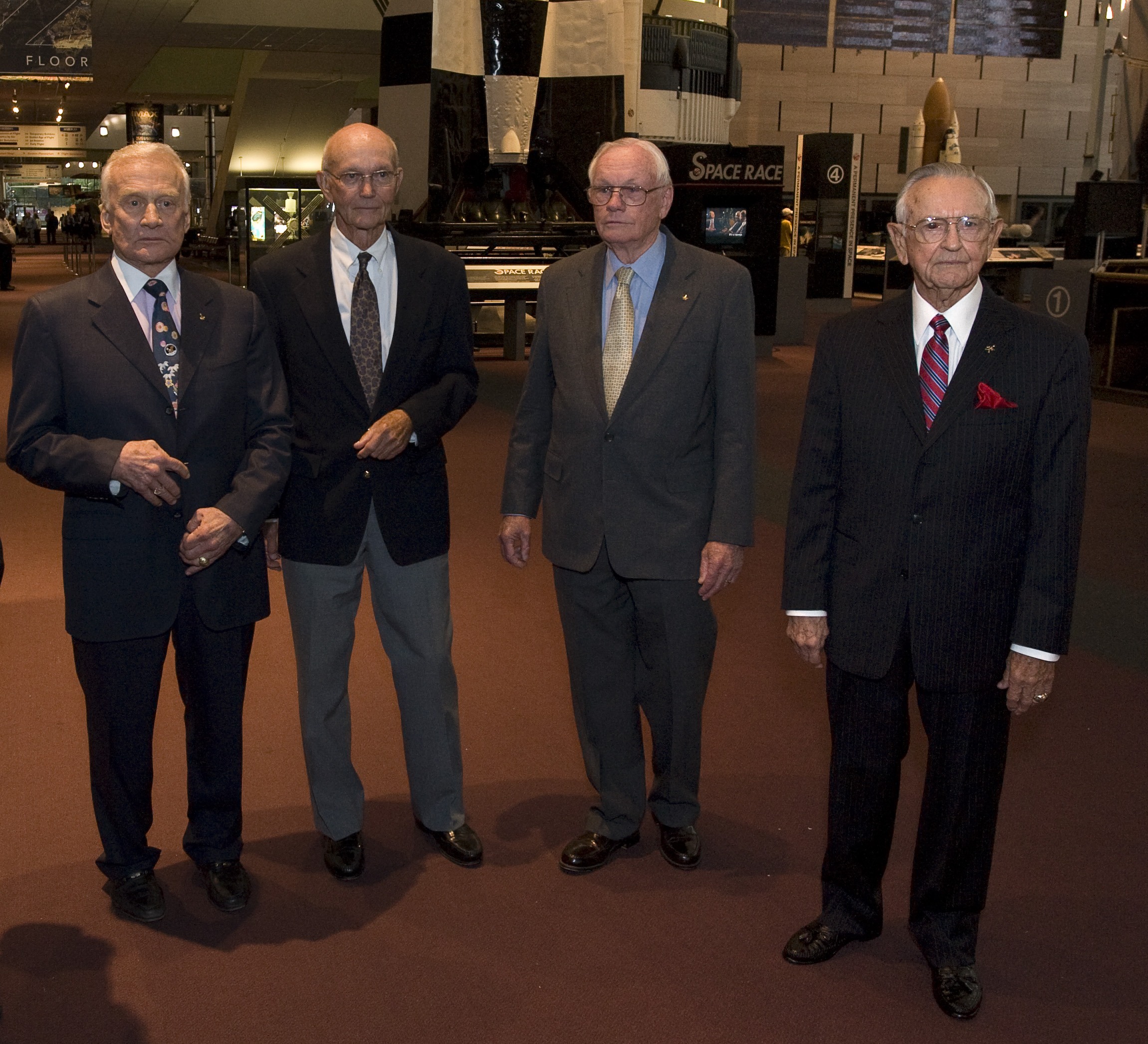[ad_1]

Credit:
NASA/Getty Images
On the eve of the 40th anniversary of the first human landing on the Moon, Apollo 11 crew members, Buzz Aldrin, left, Michael Collins, and Neil Armstrong and NASA Mission Control creator Chris Kraft, right, during their visit to the National Air and Space Museum on July 19, 2009.
Credit:
NASA/Getty Images
Armed with these bleak options, Frosch returned to Washington. Some time later he would meet with Carter, not expecting a positive response, as the president had never been a great friend to the space program. But Carter, according to Kraft, had just returned from Strategic Arms Limitation Talks (SALT) in Vienna, and he had spoken with the Soviet leader, Leonid Brezhnev, about how the United States was going to be able to fly the shuttle over Moscow continuously to ensure they were compliant with the agreements.
So when Frosch went to the White House to meet with the president and said NASA didn’t have the money to finish the space shuttle, the administrator got a response he did not expect: “How much do you need?”
In doing so, Jimmy Carter saved the space shuttle, Kraft believes. Without supplementals for fiscal year 1979 and 1980, the shuttle would never have flown, at least not as the iconic vehicle that would eventually fly 135 missions and 355 individual fliers into space. It took some flights as high as 400 miles above the planet before retiring five years ago this week. “That was the first supplemental NASA had ever asked for,” Kraft said. “And we got that money from Jimmy Carter.”
As I walked out of Kraft’s house that afternoon in late spring, I recall wondering whether this could really be true. Could Jimmy Carter, of all people, be the savior of the shuttle? All because he had been bragging about the shuttle’s capabilities to the Soviets and, therefore, didn’t want to show weakness? This Cold War mystery was now nearly 40 years in the past, but most of the protagonists still lived. So I began to ask questions.
Carter’s apathy toward space
At the root of my skepticism was this simple fact—Jimmy Carter was no great friend to the space program or, at least initially, the shuttle. Less than five months after he became president, on the date of June 9, 1977, Carter wrote the following in his White House Diary: “We continued our budget meetings. It’s obvious that the space shuttle is just a contrivance to keep NASA alive, and that no real need for the space shuttle was determined before the massive construction program was initiated.”
[ad_2]
Source link

